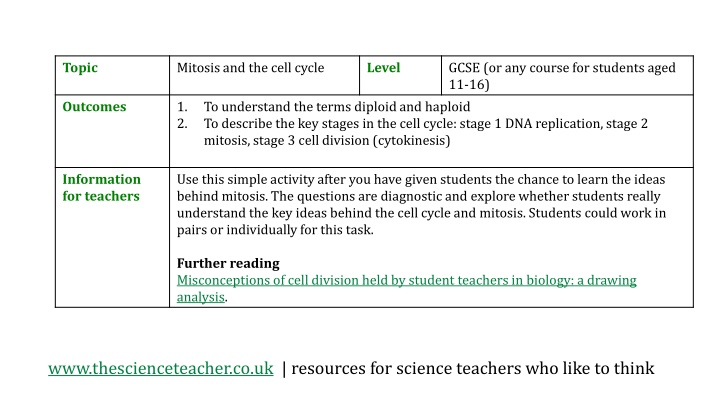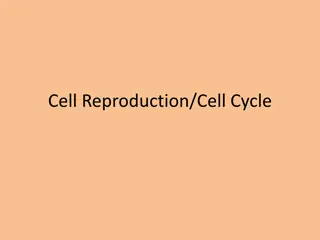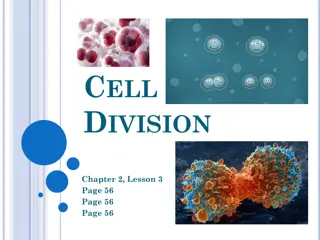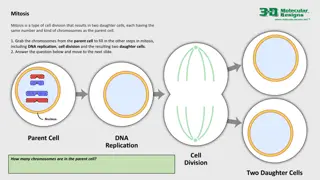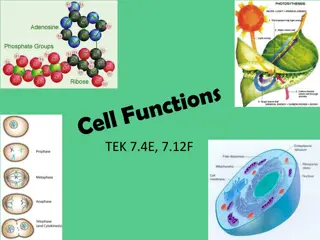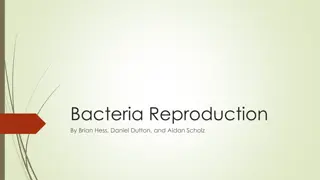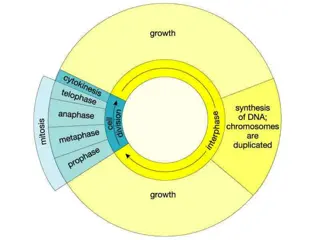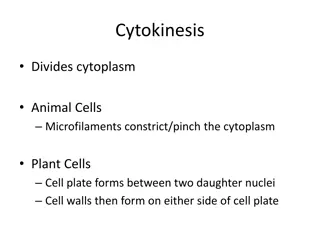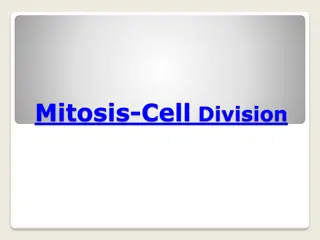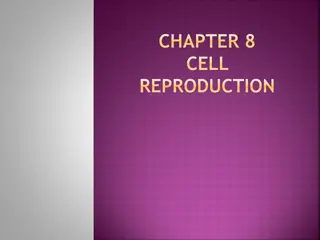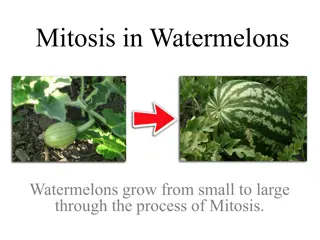Key Stages in Cell Cycle: Mitosis & More
Dive into the world of mitosis and the cell cycle with this engaging activity for young learners. Explore the concepts of diploid and haploid cells, and describe the essential stages of DNA replication, mitosis, and cytokinesis. This hands-on approach will solidify students' understanding and make learning fun.
Download Presentation

Please find below an Image/Link to download the presentation.
The content on the website is provided AS IS for your information and personal use only. It may not be sold, licensed, or shared on other websites without obtaining consent from the author.If you encounter any issues during the download, it is possible that the publisher has removed the file from their server.
You are allowed to download the files provided on this website for personal or commercial use, subject to the condition that they are used lawfully. All files are the property of their respective owners.
The content on the website is provided AS IS for your information and personal use only. It may not be sold, licensed, or shared on other websites without obtaining consent from the author.
E N D
Presentation Transcript
Topic Mitosis and the cell cycle Level GCSE (or any course for students aged 11-16) Outcomes 1. 2. To understand the terms diploid and haploid To describe the key stages in the cell cycle: stage 1 DNA replication, stage 2 mitosis, stage 3 cell division (cytokinesis) Information for teachers Use this simple activity after you have given students the chance to learn the ideas behind mitosis. The questions are diagnostic and explore whether students really understand the key ideas behind the cell cycle and mitosis. Students could work in pairs or individually for this task. Further reading Misconceptions of cell division held by student teachers in biology: a drawing analysis. www.thescienceteacher.co.uk | resources for science teachers who like to think
This is a diagram representing the chromosomes inside an adult mosquito cell. 1. How many chromosomes are present in this cell? 2. What are chromosomes made from? 3. What is the diploid number of this cell? 4. How many chromosomes would be present in an egg cell from a mosquito? 5. What is the haploid number of this mosquito? 6. What is missing from the picture that should be included? 7. Before mitosis takes place, the DNA is replicated. Explain why the daughter cells do not have 12 chromosomes 8. Why do organisms that reproduce by sexual reproduction have even numbers of chromosomes?
1. How many chromosomes are present in this cell? 6 2. What are chromosomes made from? DNA 3. What is the diploid number of this cell? 6 4. How many chromosomes would be present in an egg cell from a mosquito? 3 5. What is the haploid number of this mosquito? 3 6. What is missing from the picture that should be included? Organelles 7. Before mitosis takes place, the DNA is replicated. Explain why the daughter cells do not have 12 chromosomes. The cell divides into two to form two identical daughter cells, each containing 6 chromosomes. 8. Why do organisms that reproduce by sexual reproduction have even numbers of chromosomes? The number is even because one set (pair) of chromosomes is inherited from each of two parents. One chromosome from each pair comes from the sperm (father) and one comes from the egg (mother). These homologous chromosomes contain the same genes e.g. wing length but may have different forms e.g. short or long
